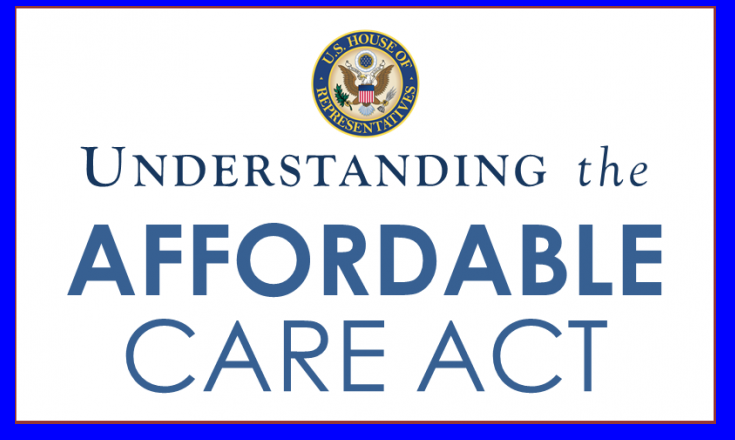By now, most Americans are familiar with the terminology “ObamaCare” or “The Affordable Care Act” – the two are interchangeable. The Affordable Care Act, often abbreviated simple as the “ACA” was signed into law on March 23, 2010 by President Barack Obama. It was our 44th president’s goal to give everyone in the nation healthcare that was accessible and affordable. He was able to realize this dream which was fueled, in part, by his mother’s death from liver failure as she lacked the funds and insurance to battle that disease successfully.
The ACA baggage
Though it was an uphill battle for getting ObamaCare in place, finally the Supreme Court upheld the ACA on June 28, 2012. It changed healthcare insurance dramatically since it has allowed the luxury of healthcare to Americans who never were able to afford a doctor’s visit when they were sick, let alone to see a doctor on a regular basis to maintain good health for the rest of their lives. Most Americans who lived below the poverty level, or simply could not afford healthcare as they did not receive it through their employer, merely showed up at the E.R. when they were too sick to take care of themselves any longer.
The ACA has changed healthcare in many ways. Those with pre-existing medical conditions are no longer turned away from obtaining healthcare or charged more for the privilege of obtaining healthcare, young adults are now permitted to stay on their parents’ healthcare plan longer, and it permits the right to rapid appeal of insurance company decisions as well as improving the Medicare and Medicaid.
But the ACA challenge for employers
President Obama’s implementation of the Affordable Care Act has affected employers as well as it provides tax breaks to small businesses for offering health insurance to their employees and it also requires larger businesses to insure employees. As mentioned above, for some employees this is a blessing; for employers it is a hassle. There are forms to fill out, employee healthcare benefits to be retooled and the poor H.R. Director and his/her department are left wringing their hands in desperation over the added paperwork. And now, just a few years after its implementation, the Affordable Care Act will cause even more consternation at the beginning of the new year.
Rules and regulations that employers need to know
Yes, now the poor employer must endure still more rules and regulations that they need to learn about and implement since in early 2016 it will be necessary for many employers to file annual information returns with the Internal Revenue Service (“IRS”). In conjunction with the filing of these returns with the IRS, they must provide annual statements to their employees regarding their health plan coverage information as well.
Yikes! More information about these forms
Employers need to familiarize themselves with the reporting requirements NOW. There are forms for companies with 50 employees or less and forms for companies with 50 employees or more. Below is a recap about the new forms, and more information. There are FAQs, as well as downloadable forms available on the IRS website (see paragraphs below) or the ObamaCare website at this link: https://obamacarefacts.com/obamacare-employer-mandate/.
Forms 1094-C and 1095-C
Employers that employed an average of at least 50 full-time (or full-time equivalent employees) during the preceding calendar year are deemed “large employers” and will be required to prepare Forms 1094-C and 1095-C. All large employers must complete two parts of the form, i.e. Parts I and II of the Form 1095-C for each of its full-time employees, regardless of whether they offer a fully insured health plan, a self-funded health plan, or both. If a large employer offers only a fully insured health plan, it must complete only Parts I and II of the Form 1095-C for each of its full-time employees, while the insurance company will be required to prepare separate Forms 1095-B to report coverage for those same full-time employees. On the other hand, if the large employer offers employer-sponsored self-insured health coverage in which the employee or other individual actually enrolls, that large employer must complete parts I, II, and III of the Form 1095-C. Form 1094-C is the transmittal form to the IRS for the Forms 1095-C (similar to the Form W-3 for Forms W-2). Employers will need to complete the forms for each month of the calendar year. The forms are available at this IRS website: https://www.irs.gov/Affordable-Care-Act/Employers/Questions-and-Answers-about-Information-Reporting-by-Employers-on-Form-1094-C-and-Form-1095-C
Forms 1094-B and 1095-B
Smaller employers that are not yet subject to the “pay-or-play mandate” may also have reporting requirements, but will use Forms 1094-B and 1095-B to report health coverage information to the IRS. Small employers that sponsor only fully insured group health plans are not subject to the reporting requirements, and their insurance carriers are responsible for the completion of the Forms 1094-B and 1095-B. However, small employers that sponsor self-insured group health plans are subject to the reporting requirements and must complete Forms 1094-B and 1095-B to report information about individuals enrolled in the self-insured plan. The forms and additional information are available at this IRS website: https://www.irs.gov/instructions/i109495b/ar01.html.
Filing and distribution deadlines
The filing and distribution deadlines for the forms described above are similar to the Form W-2 filing and distribution deadlines. Copies of Forms 1095-C or 1095-B must be distributed to employees by February 1, 2016. (Note: Although the distribution deadline is generally January 31st, January 31, 2016 falls on a Sunday, thus the extended one-day deadline.) Then, the forms must be filed with the IRS on or before February 29, 2016 (March 31, 2016, if filing electronically). Electronic filing with the IRS will be required if an employer must file at least 250 Forms 1095-C or 1095-B.
It’s best for employers to be proactive and not procrastinate. Even though the reports will not be filed until early 2016, employers should take steps now to comply with the new reporting requirements. With the holiday season on the horizon, and often a skeleton crew of staff, 2016 will be here before you know it.
The time is now to review the applicable forms pertinent to your company (1094-C and 1095-C or Forms 1094-B and 1095-B) and understand the instructions and requirements for the new reporting. Review all recordkeeping systems to ensure the necessary and required information such as hours worked and cost of coverage is readily available to complete the forms. Unfortunately, if a company is large, this might become an overly burdensome task requiring the help of a third-party vendor to help complete the reporting requirements. Lastly, work closely with your payroll or tax department personnel (whether they are in-house or outside vendors) to establish procedures and expedite the distribution of forms to employees and ensure expeditious filing of those forms with the IRS.
If you are overwhelmed by the added work that will be placed on your shoulders, you might want to consider consulting with a New Jersey employment attorney whose expertise will help navigate you through these burdensome requirements and set you free to pursue endeavors related to your company.




